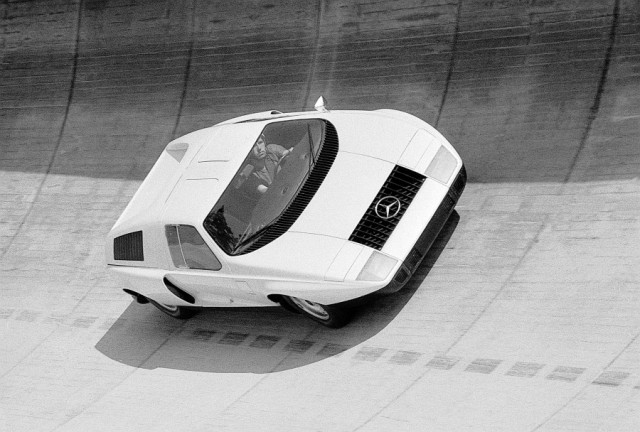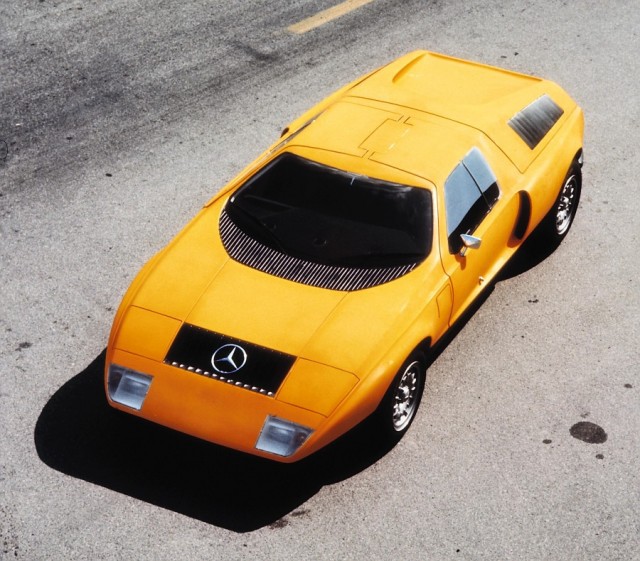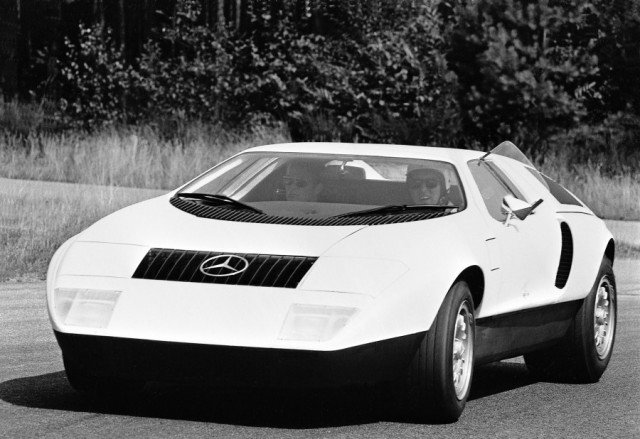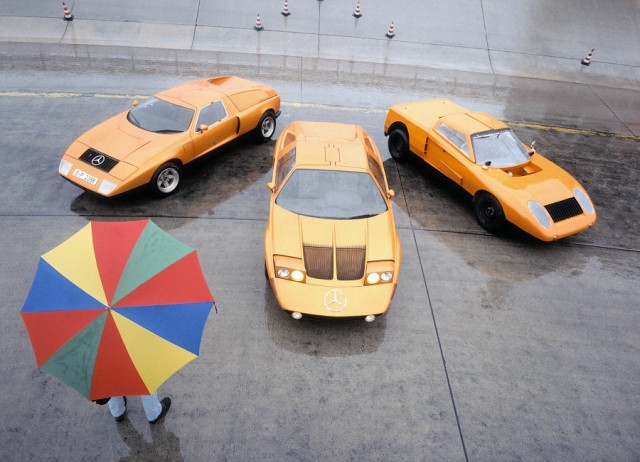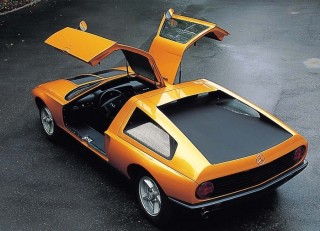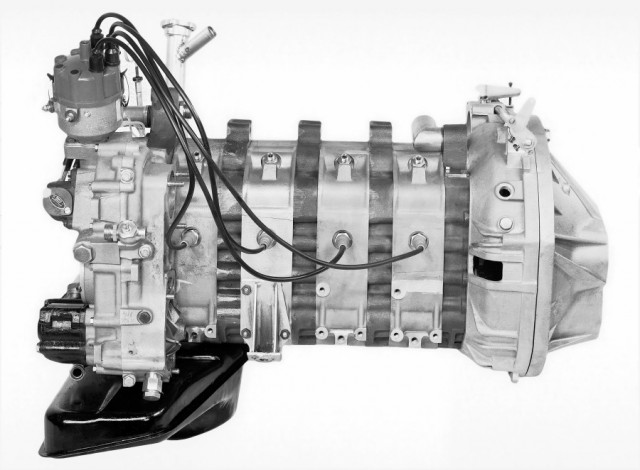Gullwing doors on a Mercedes-Benz. The 300 SL got them first, the SLS AMG was the next car to get gullwing doors, right? Until my little brother stumbled across the C 111, I thought so too. Without getting into nerdy details of series production and concept cars, let’s just say, the first Merc after the 300 SL to have those artfully crafted doors would be the C 111. That isn’t the end of it though. The C 111 also had glass-fiber-reinforced plastics as bodywork material, riveted and bolted to the steel frame/floor unit. Did I mention the C 111 was powered by a Wankel engine? The C 111 was one of Mercedes-Benz’s ‘Research Cars’ and hence the overload of experimental technologies.
Felix Wankel’s unconventional propulsion system had been something of intrigue for a number of automakers in the 1960s and Mercedes-Benz was no exception. Mercedes-Benz, too, had been experimenting with Wankel engines since 1962. The C 111 was first displayed by Mercedes-Benz in September 1969 at the Frankfurt International Motor Show (IAA) with a three-rotor Wankel engine that developed 280 hp from 600 cubic centimeters of chamber volume per rotary piston and gave the car a top speed of 260 km/h. The C 111 clocked 0 to 100 km/h in five seconds.
The wedge shaped body, the shade in which the C111 was clothed – ‘Weißherbst’ or ‘rosé wine’ and the gullwing doors helped cement the C 111 as an object of desire for every auto enthusiast who had the privilege of getting to know this automobile. Now remember this was the period when youngsters had their retinas seared with images of sensational cars like the Miura, the Ferrari Daytona, Mangusta and a whole horde of American muscle cars. To dislodge some of these images from the enthusiasts’ mind and then take its place, the C 111 must have been THAT spectacular.
Mercedes-Benz C 111-II
If that wasn’t enough, Mercedes-Benz, in just a few months showcased the C 111-II at the Geneva Motor Show. The three rotor Wankel engine was swapped for a four-rotor Wankel engine with an output of 350 hp.The engine, a DB M950 KE409 model, also had 600 cubic centimetres of volume per rotary piston and was the most advanced of the rotary piston engines developed at Mercedes-Benz. The engine transmitted its power to the rear wheels via a five-speed transmission, accelerated the C 111-II from a standing start to 100 km/h in 4.8 seconds and gave a top speed of 300 km/h.
While some of the engines in the C 111-I cars had dual ignition systems which was difficult to adjust, the four-rotor engine was equipped with single ignition only. Both engines were direct-injection units.
The C 111-II also had a modified body that had better aerodynamic efficiency with a drag coefficient of Cd of 0.325 which was exceptionally low for the period. Driver visibility was also improved. Mercedes-Benz proudly claims that with the modified body and new Wankel engine, which now developed torque of 392 Nm, no other road-going supersports car was a match for the C 111-II.
While the Wankel engine had the advantages of being compact design and very quiet, the Wankel engine’s inherent problems – poor degree of efficiency, due to the elongated, variable combustion chambers of the rotary-piston principle could not be overcome by any degree of engineering ingenuity. This problem was simply inherent in the design: in a Wankel engine, the fuel burns within the space between the convex side of the rotary piston and the concave wall of the piston housing rather than the cylindrical combustion chamber of a reciprocating-piston engine. The variable combustion chambers of the Wankel engine were responsible for poor thermodynamic fuel economy as compared to a reciprocating-piston engine, resulting in significantly higher fuel consumption for the same output says Mercedes-Benz.
Now this is something that has us flummoxed. While Mercedes-Benz does mention that both variants of the Wankel engine on the C 111 were gas-guzzlers, the magazine auto motor und sport dated 11 April 1970 mentions that the Mercedes wankel engines delivered ‘an average of 20 litres/100 km’ which was typical for cars of that period. Nervertheless, if not for reasons of fuel efficiency, the Wankel engines had to be shelved for reasons of high emissions.
“The Wankel engine was not yet mature enough to be handed over to customers in line with company standards,” said Dr. Hans Liebold, Head of the C 111 Projects in the year 2000, from the first Wankel study right up to the later record-breaking cars with reciprocating piston engine. He also drove the cars his team built on a number of occasions while setting records!
In retrospect, Dr. Kurt Obländer, head of engine testing in the C 111 project, described the Wankel engine as follows: “Our four-rotor engine with gasoline injection represented the optimum of what could be reached with this engine concept. The multi-rotor design called for peripheral ports for the intake-air and exhaust-gas ducts. We were able to solve the difficult problems in engine cooling and engine mechanics by technical means. But the main problem of the concept, its low thermodynamic degree of efficiency, remained. Due to the elongated, not exactly compact combustion chambers, fuel economy was poor, resulting in high fuel consumption and unacceptably high pollutant emissions. These drawbacks were inherent in the design principle.”
Mercedes-Benz discontinued work on the Wankel engine in 1971 and went back to reciprocating engines.
Click on the link below to the Diesel engine era to continue reading.
